Skin biopsies are one of the most common procedures performed in dermatology. The goal of a skin biopsy is to take a sample of the skin to send for microscopic evaluation in aid of confirming our clinical diagnosis which enables us to offer a more appropriate treatment.
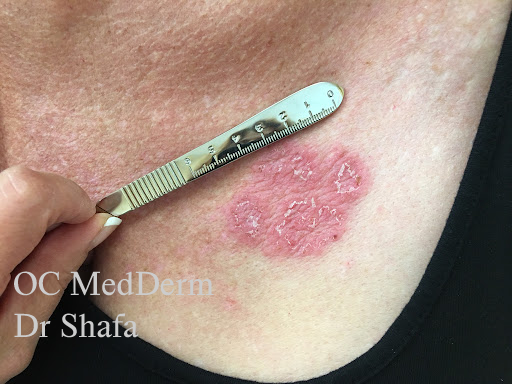
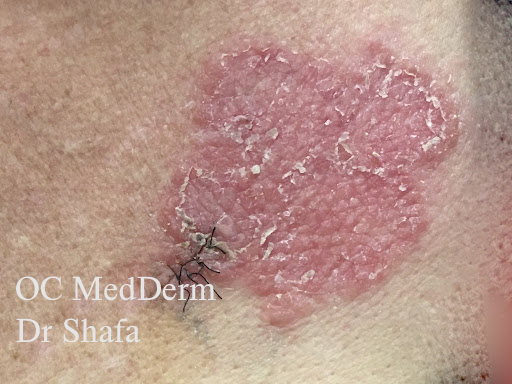
Different skin lesions may require different types of skin biopsies that will be discussed below.


A shave biopsy is performed by simply shaving off the suspicious skin lesion. Such a biopsy is less invasive and does not require stitches. It is the technique of choice for lesions that are not rooted deep and primarily sticking out from the skin. After such a procedure you benefit from aesthetic results as well as confirming the diagnosis of a nuisance skin lesion.
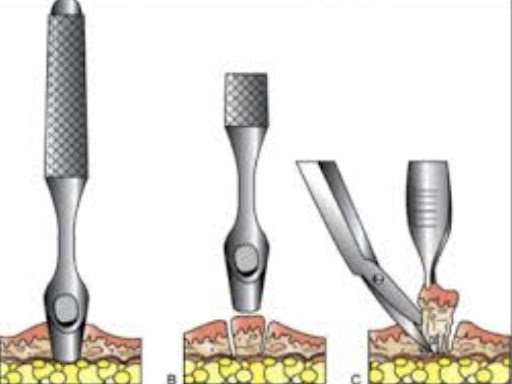
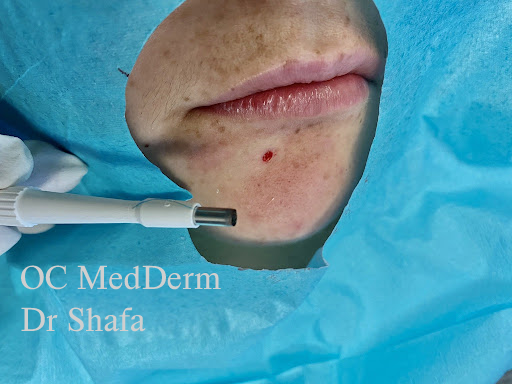
Punch biopsy is performed using a circular tool similar to one pictured above, which enables us to ‘punch out’ a few millimeter diameter, round column of the skin for microscopic evaluation. It is performed to examine deeper layers of the skin, in addition to the top layer. It is the technique of choice for rashes that are flat on the skin or anytime your dermatologist feels like a deeper sample will provide more information.
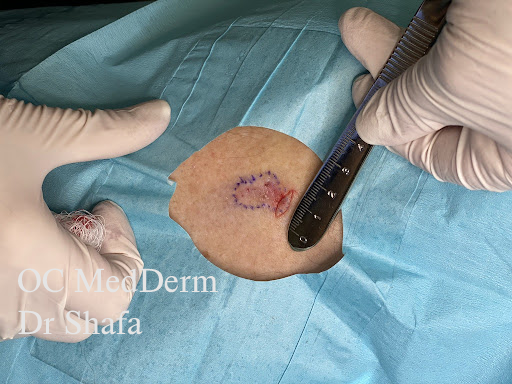
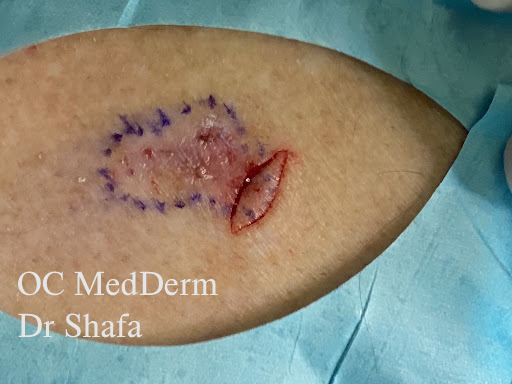
Incisional biopsy removes just a small portion of the suspicious skin lesion and not all of it. It is similar to a punch biopsy when full skin thickness is needed, however shape, size and location of the excision can be adjusted as needed by the dermatologist. It allows removal of a larger portion of the suspicious lesion with less scarring and it requires more time and expertise than a punch biopsy.
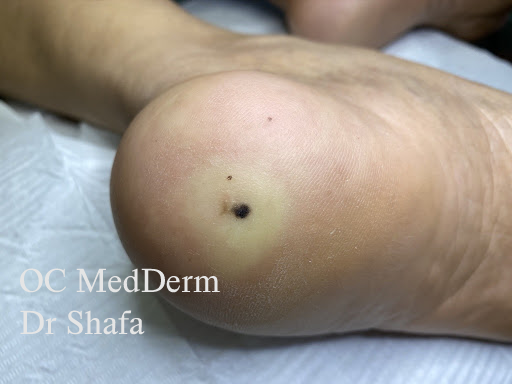
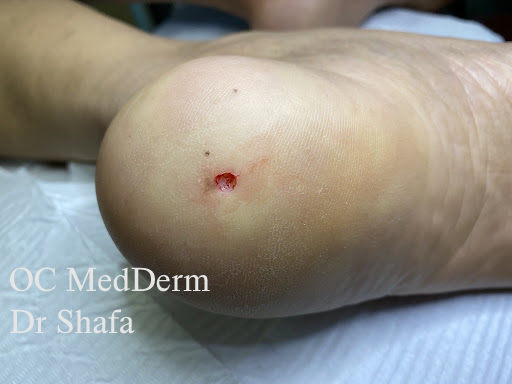
If a suspicious lesion is small, we may choose to excise the entire lesion in an excisional biopsy. It is a desired procedure for the following reasons.
Skin biopsies are performed under local anesthesia. The local anesthesia is administered as an injection with a very tiny needle. As soon as the anesthesia kicks in, no other discomfort will be felt. Your dermatologist will make sure to test the area to make sure the local anesthesia has set in properly.
The area is initially prepared and cleaned to create a sterile site. Local anesthesia is injected with a small needle (this is the only part of the procedure with any discomfort). Once the area is numb, the planned biopsy is performed. Site of biopsy typically will be closed with a few stitches (shave biopsy does not need sutures). Subsequently Aquaphor ointment will be applied to the wound and covered with bandages.
Recovery for skin biopsies are typically very quick without complications since only a small area of the skin is affected. There is a risk for infection following a skin biopsy, but the risk is minimized when biopsy is performed by a dermatologist in sterile conditions with proper post-care instructions provided. Do not use topical antibiotics for your wound care unless you are instructed so.
Post care instructions are simple, yet very important to heal with less or no scarring. You have to keep the area dry for 24 hours. Then you should wash the area with soap and water gently, pat dry the area followed by ointment and bandage. You must keep the wound covered with ointment (Vaseline or Aquaphor) and bandage all the time until the site of biopsy is healed fully. We recommend cleaning and repeating this process twice a day. Strictly avoid direct sun exposure to the healing wound in order to diminish the risk of discoloration at the site of the biopsy. Continue wound care after stitches are removed and skin has healed completely.
Although most of the skin manifestation can be diagnosed clinically, occasionally microscopic evaluation is necessary to differentiate between similar looking skin eruptions. Another very important issue is that cancer related skin lesions can resemble benign lesions. Pathologists are able to evaluate the tissue under microscope and confirm the diagnosis in most cases. After biopsy the tissue sample is sent to a laboratory where it will be processed and read microscopically by a trained dermatopathologist and the result reported to us. Our dermatologists will then decide what is the best management option for your specific case.
We recommend patients keep the procedure site covered with the bandage for 24 hours prior to removing. If any bleeding is noted after leaving the office, we recommend 10 to 15 minutes of nonstop direct pressure over the bandage. If the area is still bleeding we recommend repeating this process for another 10 to 15 minutes. If still bleeding, call our office for further care.
Suture removal (if needed) will be 1-2 weeks following the procedure. A follow up appointment to recheck the site of biopsy as well as reviewing the pathology report and treatment plan will be set two weeks after the biopsy. All questions and concerns will be answered thoroughly at your follow up visit. Please keep in mind that you will not be called for biopsy results and treatment plan as these will be discussed thoroughly at your follow up appointment.
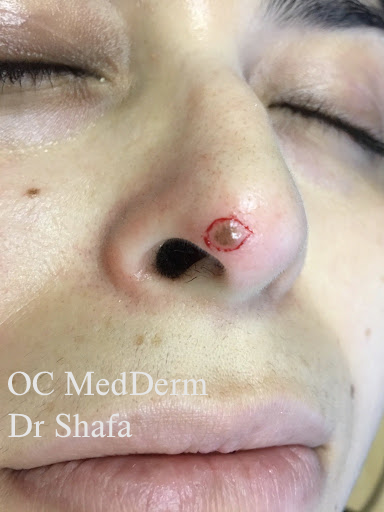
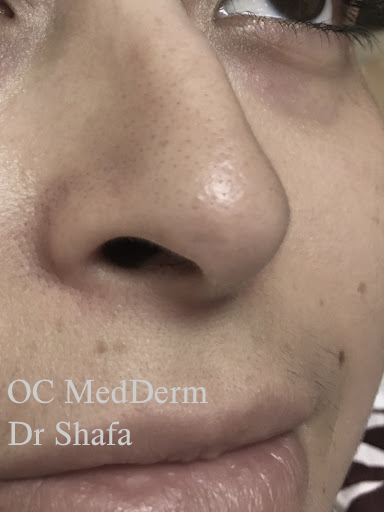
With any kind of cutting of the skin there is a risk for potential scarring. Our dermatologists at OC MedDerm are trained to perform these procedures in a manner to minimize risk of scarring. Preventing scar formation is a collaborative process between the dermatologists and patients. You must carefully follow post care instructions to help minimize scar formation following any procedure. Bear in mind that in certain areas of the body for people prone to keloid there is a higher risk of scarring at the site of any skin procedure. Please inform your surgeon if you have a personal or family history of keloids.
Your dermatologist will have a thorough discussion with you regarding your biopsy results. If your biopsy returns as skin cancer, our dermatologists will go over management options with you. Management of skin cancer depends on the type of skin cancer, size, location, microscopic features, and many other factors. Our dermatologists will provide you with all the information necessary to make a joint patient/provider decision.
Skin biopsies are typically covered by insurance, however many patients have a deductible for the procedure. This means that if your deductible has not been met yet, then you will be asked to pay a portion of your deductible prior to the procedure.
Skin biopsies are performed quick, pain free and with minimal scarring. It usually takes care of two issues at one time. 1) The bothersome skin lesion will be removed completely and 2) the diagnosis will be confirmed microscopically. If you have a suspicious or changing skin lesion, just Call us to make an appointment for evaluation. Ask Question
Other Treatments
Acne Surgery | Boil or Infected Cyst Surgery | Cyst Removal | Ear Lump Removal | Ear Surgeries, Medical | Eyelid Stye & Bumps Surgery | Foreign Body Removal | Ingrown Hair Removal | Ingrown Nail Surgery | Keloid Injection | Lumps and Bumps Removal, Medical | Nail Extraction | Non-Healing Lesion Biopsy | Skin Cancer Excision | Skin Tear Closure | Warts Surgery
Book a consultation at OC Medderm | Irvineskin Today for Medical, Surgical, and Cosmetic Dermatology in Irvine & Orange County, CA.
We are experts in Acne, Pinch blepharoplasty, Ear lobe repair, Xanthelasma repair, Syringomas removal, mole removal, Keloid removal, Body and face piecing or piercing repair or removal, lump and bumps removal, Acne scar removal, Spider vein treatment, fungal infection, Co2 resurfacing, Warts and more.
You can schedule an appointment or call us now for all the dermatology treatments. We are located at 113 Waterworks Way 100, Irvine, Orange County CA, We Are Dedicated to Providing the Best & Transparent Dermatology Care for your skin.
Call us when you want!